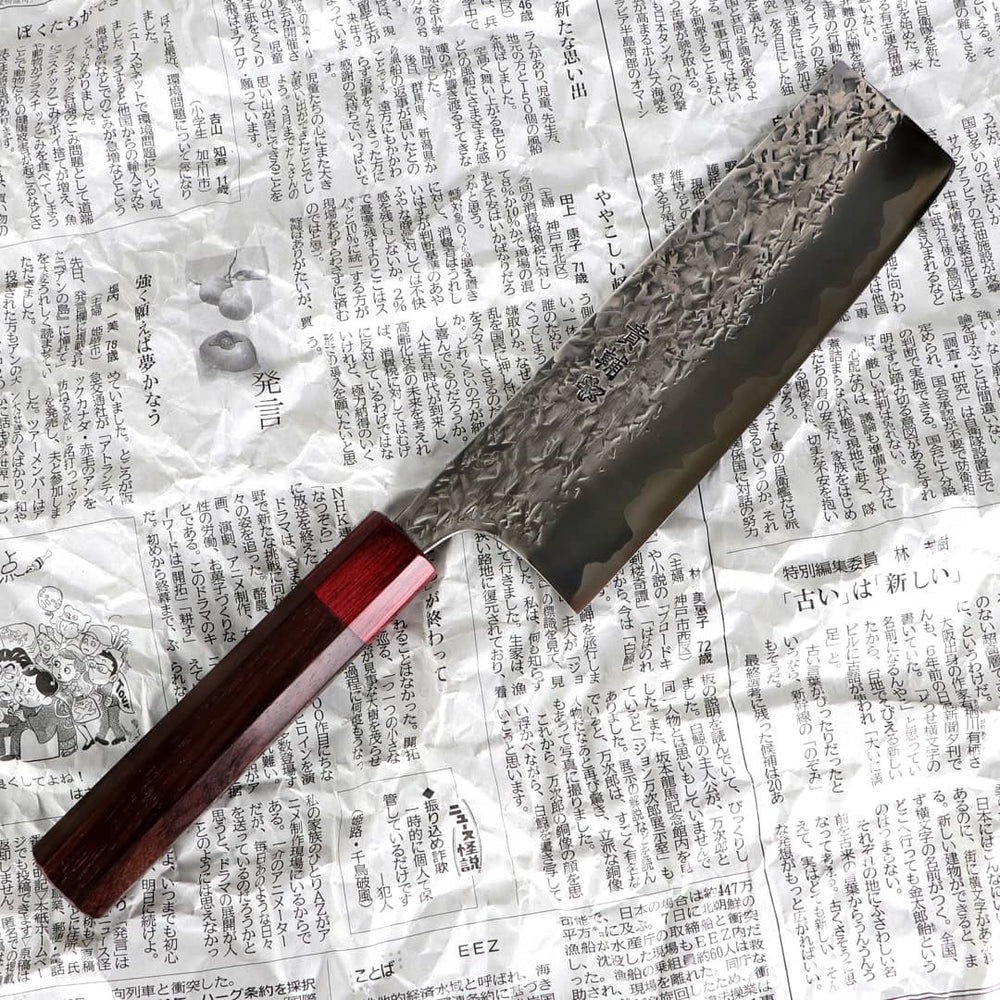Japanese Chef Knife - Blade Structure and Handle
A Japanese knife gets its special characteristics only through the special blade construction. When talking about genuine Japanese knives, one must first distinguish and be aware that it is not just about the shape, but about the blade structure. Many manufacturers call their products Santoku knives or Japanese knives, but in many cases the blade shape is the only thing these knives have in common with real Japanese knives. In this article we explain how you can recognize real Japanese kitchen knives and why Japanese kitchen knives can't be cheap. As is often the case in life, you get what you pay for when it comes to kitchen knives.
The term Japanese chef's knife is not a trademarked term, so in a way, anyone can call their product that. Therefore, you can find countless products on the Internet or in local retail stores with paraphrases that remotely include "Japan" and "Knife". Mostly the Japanese blade shape Gyuto, Santoku , Nakiri knife or Petty is used to declare the knife as a Japanese kitchen knife. This may be legally okay, but then it neither originates from Japan nor would it be made that way by Japanese blacksmiths. Japanese knife blades, with few exceptions, are almost always 3-ply or 2-ply in construction. That means, there is a blade steel that is either coated or plated from two sides or from one side. The reason for this is better flexibility of the entire knife. The blade or core steel itself is very hard, but it is also at risk of breaking easily when hit or jolted. With a softer outer layer steel, the blade steel is relieved and more flexible. The following sketch shows how the individual blade structures are called. Honyaki blades are the already mentioned exceptions without sheath steel. These blades are very difficult to manufacture, extremely prone to blade breakage, and very expensive. These types of blades are for enthusiasts and people who are looking for the extraordinary.
Due to the multi-layered blade construction of classic Japanese knives, one has the first clue if it is an authentic knife or not. At multi-layered Japanese knives you can see a transition from the blade to the cutting edge. The wavy line is the transition from the outer sheath steel to the blade core and never runs in the same pattern. With cheap products you will see that this transition line either does not exist or has been artificially applied. For example, if you take two of these cheap products and they have the exact same transition line, it is a fake. So one should pay attention. Hand forged Japanese knives are not cheap and if the price is less than 70€ you should check carefully if you are looking at an authentic product made in Japan.

The handle is traditionally made of wood and has a ferrule which is often made of horn or plastic. Japanese knives with western handles are available as well. These can be made of wood, plastic, metal or other materials and differ in the shape of the handle. Japanese knife handles are usually connected to the blade only by glue and their Western counterparts by rivets. A Japanese knife handle can therefore become loose over time, which is not a bad thing. You can either replace it or simply press it back on.
Japanese knives usually have a sharp rear cutting edge. Inexperienced users should be careful here so that they do not injure themselves. You have to handle Japanese kitchen knives with your fingers on the blade and the handle. So if you want to buy a real Japanese knife, you should inform yourself beforehand and check carefully if the knife you are buying is authentic.


